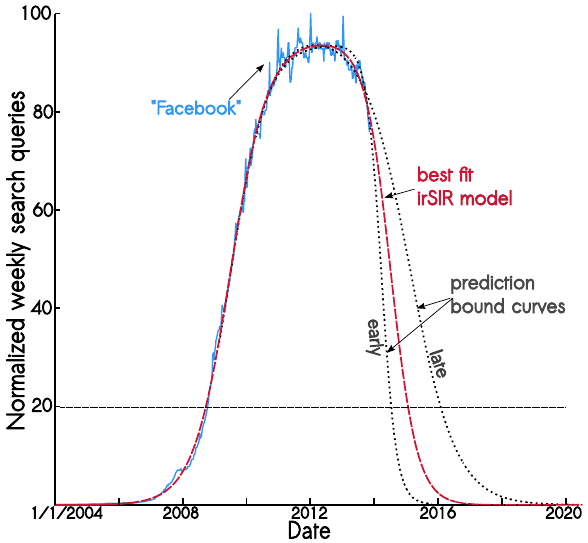class: center, middle, inverse, title-slide .title[ # The death of online social networks ] .author[ ### David Garcia <br><br> <em>ETH Zurich</em> ] .date[ ### Social Data Science ] --- layout: true <div class="my-footer"><span>David Garcia - Social Data Science - ETH Zurich</span></div> --- # So Far - Computational Social Systems and new social data - Search behavior and future orientation - The Simmel effect and Social Impact Theory - Text and Sentiment Analysis: Theoretical basis and methods - Introduction to social networks - Terminology, adjacency matrices, measures - Centrality: degree, closeness, betweenness - The friendship paradox --- # The rise and fall of Friendster **Friendster** went from 80 Million active users to disappear completely. <!-- --> --- # The rise and fall of MySpace **MySpace** went from being valued more than 12 Billion USD in 2008 to be bought by [Justin Timberlake for 35 Million USD](https://www.theguardian.com/technology/2011/jun/30/myspace-internet). <!-- --> --- # The rise and fall of Orkut **Orkut** was the first attempt of Google to launch an online social network. It was very popular in some countries but lost users to Facebook and it was eventually taken offline. <!-- --> --- # The Google+ spike **Google+** was the much promoted second attempt at social networks by Google. Despite the initial hype, it lost users pretty quickly and it has been discontinued too. <!-- --> --- # Predicting Facebook's collapse .pull-left[] .pull-right[ - Cannarella and Spechler, 2014 - Epidemics model applied to the decay of online social networks - Google trends to measure the number of active Facebook users - Extrapolation predicted that Facebook would lose 80% of its users by 2017 - What happened? ] --- # Stretching the Google trends method Data scientists at Facebook [replied to the Arxiv paper](https://www.facebook.com/notes/mike-develin/debunking-princeton/10151947421191849/) showing the problem with measuring social network use levels using Google Trends data. Applying the same methodology, Facebook researchers reached the conclusion that Princeton would lose 80% of its students by 2021:  --- # Stretching the Google trends method You can even apply it to air and come to the conclusion that the atmosphere will run out of air by 2060:  --- # Google trends for Facebook The Facebook examples show that decrease in search volume is a decrease in information searching about the social network, not a decrease in access and use. <!-- --> --- # Google trends for Twitter Twitter is not living a second growth, in fact it's growth has been rather slow to stagnant for a few years, even though it appears it is gaining users after Trump's permanent suspension. <!-- --> --- # Temporal validity issues </br> A more accurate way to measure activity in a social network is Bruno Ribeiro's [approach using Alexa data](https://dl.acm.org/doi/abs/10.1145/2566486.2567984), but Alexa focuses on website visits without considering access through mobile apps. </br> Measurement is always an important issue in Computational Social Systems, and just because a paper used a measurement method few years ago, it does not mean it is valid today. </br> > **Take home message:** Your measures based on today's digital traces might not work on tomorrow's